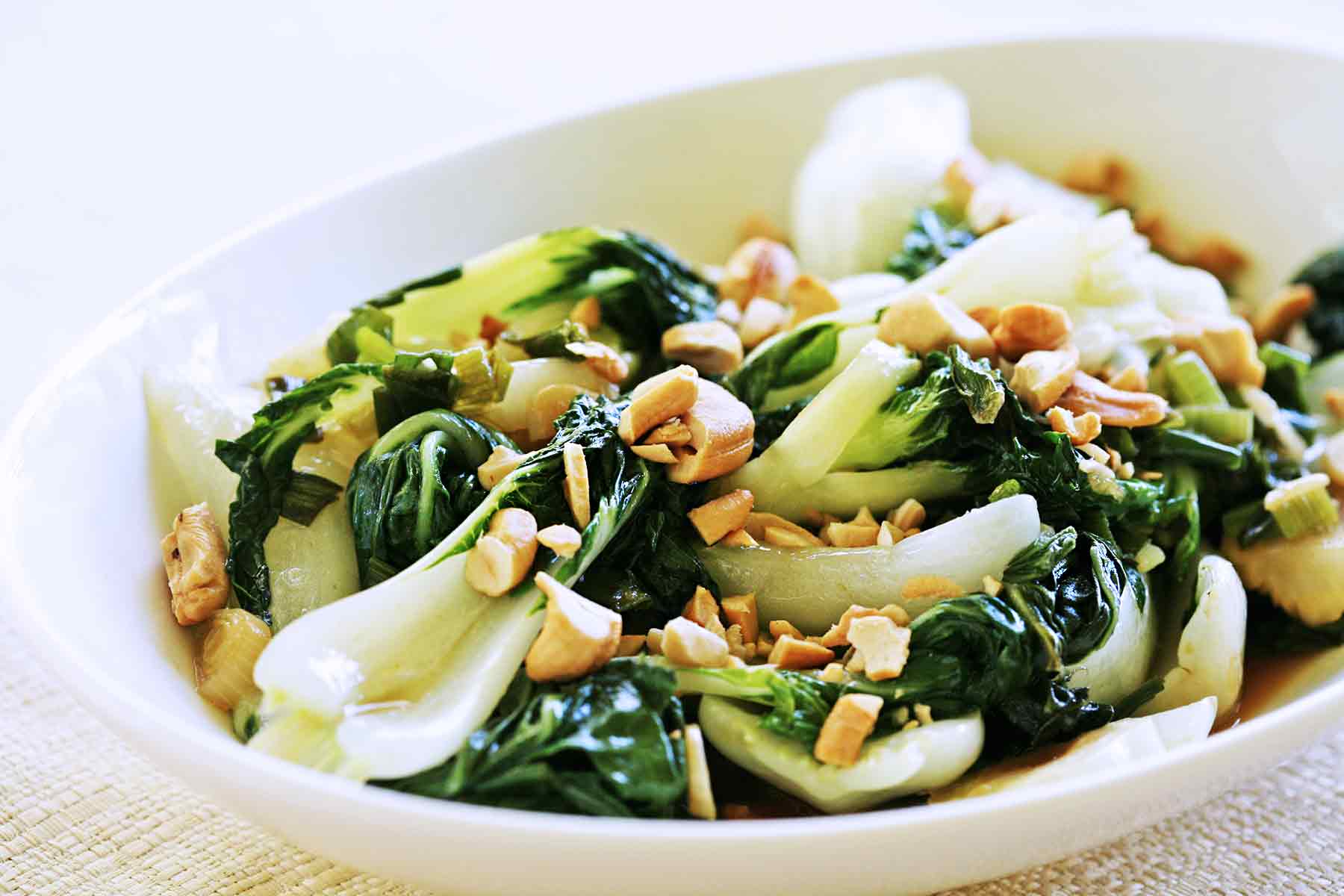Quick-Cooked Bok Choy
MAKES: 4 servings
TIME: 30 minutes
Bok choy is, dare I say it, unique. Not the greens; they’re about the same as those of many other cabbages. But its fat, thick stems become creamy and tender during cooking in a way that you cannot duplicate with other greens. This makes the basic, simple version of this recipe just wonderful; the slightly more complicated variations are even better.
Other vegetables you can use: Napa or other Chinese cabbages, white chard (probably the closest in texture, but with different flavor), or broccoli raab.
1 head bok choy, about 11/2 pounds
3 tablespoons peanut or neutral oil, like grapeseed or corn
Salt and freshly ground black pepper
Cut the leaves from the stems of the bok choy. Trim the stems as necessary, then cut them into roughly 1-inch pieces; rinse everything well. Put the oil in a large skillet over medium-high heat. When hot, add the stems and cook, stirring occasionally, until they just lose their crunch, about 3 minutes. Add the greens and about 1/2 cup water (or vegetable stock, if you prefer).
Cook, stirring occasionally, until the liquid evaporates and the stems become very tender, about 10 minutes more; add a little more water if necessary. Sprinkle with salt and pepper and serve immediately.
Variations
Bok Choy, Mediterranean Style. Quite classy: In Step 1, use extra virgin olive oil. In Step 2, when the greens are tender, stir in 2 tablespoons drained capers, 1/4 to 1/2 cup chopped pitted olives (preferably oil-cured; see Olives), and 1 tablespoon minced garlic. Cook for another minute or so, stirring, then add lemon juice or balsamic vinegar to taste (start with 1 tablespoon). Cook for another 5 seconds and serve.
Bok Choy with Black Beans. Add some Baked or Deep-Fried Tofu Baked or Deep-Fried Tofu along with the greens for extra heft: While cooking the stems in Step 1, soak 1 tablespoon fermented black beans in 2 tablespoons sherry, Shaoxing wine, or water. In Step 2, when the greens are tender, stir in the beans and their liquid, along with 2 teaspoons minced garlic and 1 teaspoon minced ginger. Cook for another minute or so, stirring, then add 1 tablespoon soy sauce, or to taste. Cook for another 5 seconds and serve.
Broccoli
A member of the very large Brassica genus that includes cabbage, mustard, turnips, and more, and a longtime regular in Italian cuisine, broccoli was barely known in the United States until the 1920s. These days broccoli is available year-round at every grocery store (there’s no reason to buy frozen). But its popularity is warranted: it’s flavorful, easy to prepare and cook, inexpensive, and nutritious.
We’re most familiar with the dark green type, but some can have a bit of purple coloring in the buds. Broccoli can be prepared in a variety of ways, which makes it a great standby vegetable to have on hand in the fridge. Serve it raw, lightly cooked, or completely cooked; steamed, boiled, sauted, stir-fried, or braised.
Buying and storing: Look for tightly packed florets with no yellowing, on top of a crisp stem. Store wrapped loosely in plastic in the refrigerator; it will keep for several days.
Preparing: Strip the stalk of leaves, if any (these are perfectly edible; cook along with the tops, if you like). Cut off the dried-out end of the stalk and peel (with a vegetable peeler or paring knife) the tough outer skin as best you can without going crazy. (To peel with a paring knife, hold the broccoli upside down; grasp a bit of the skin right at the bottom, between the paring knife and your thumb. Pull down to remove a strip of the skin.) If you like, cut the stalk into equal-length pieces and break the head into florets.
Best cooking methods: Steaming, microwaving, braising and glazing, and stir-frying are great. Regardless of the method, it often makes sense to cook the stalks longer than the florets; just start them a minute or two earlier.
When is it done? It’s a matter of taste. When bright green, it’s still crisp and quite chewy, and some people like it that way. Cook it for another couple of minutes and it becomes tender; overcook it and it becomes mushy and begins to fall apart. Try cooking until a skewer or thin-bladed knife can easily pierce the stalk.
Other vegetables to substitute: Broccoli and cauliflower are almost always interchangeable; or substitute broccoflower, Romanesco, or broccoli raab.








